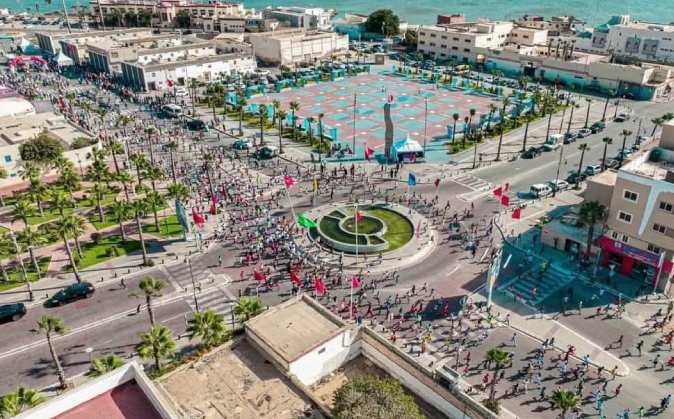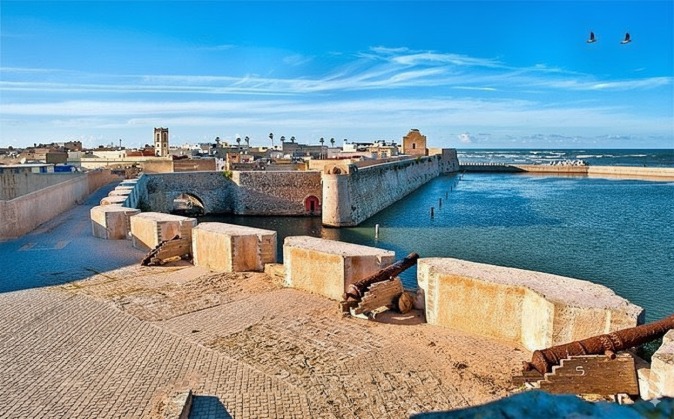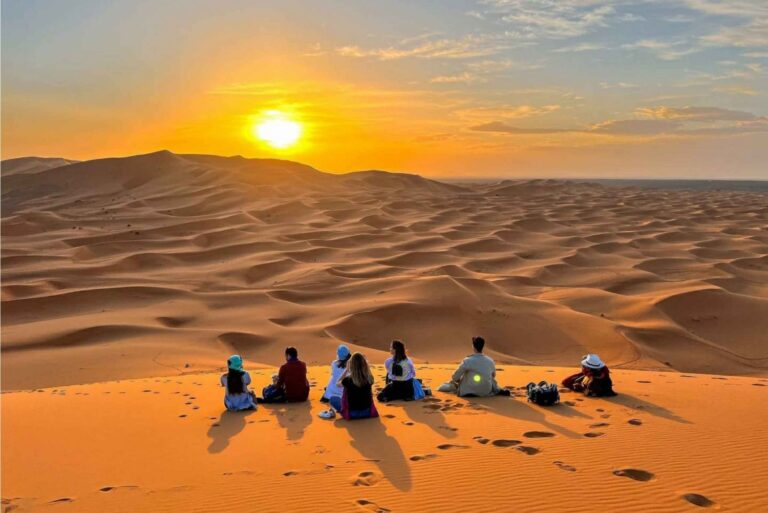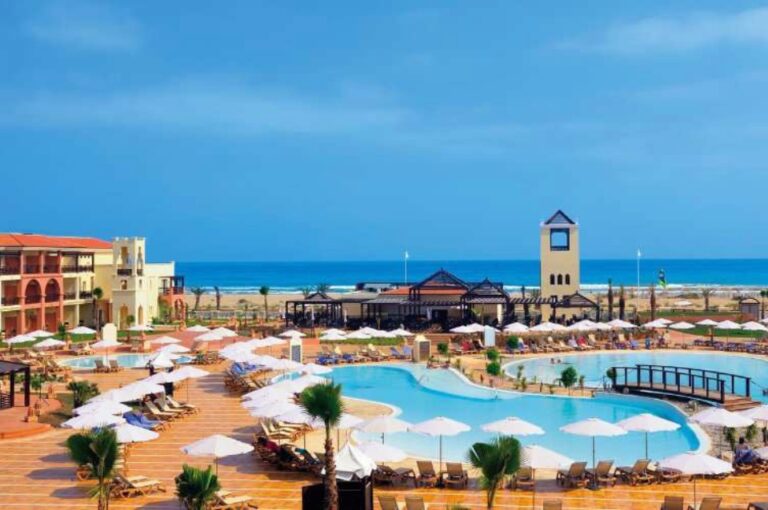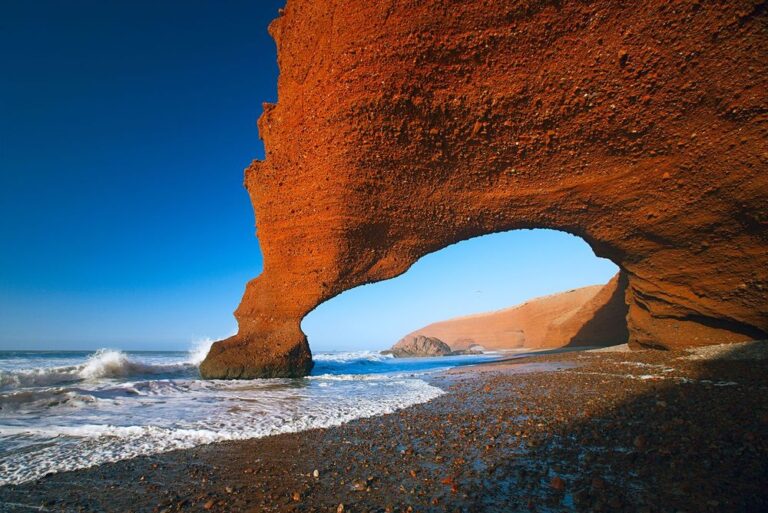Chefchaouen – Chefchaouen: Wander the Blue Streets of Morocco’s Iconic Town
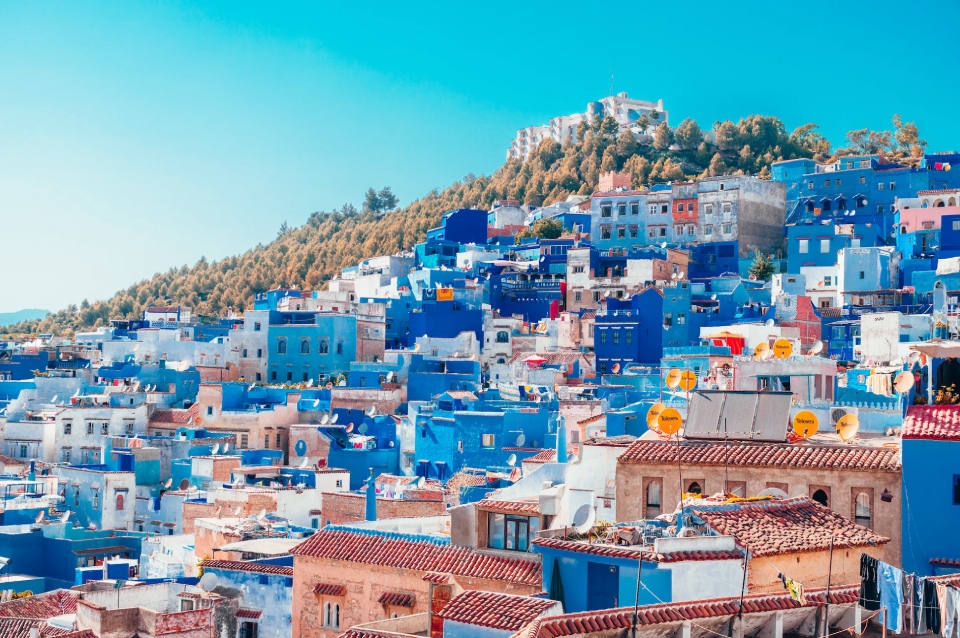
Chefchaouen emerges from the rugged landscape as one of the world’s most visually stunning cities. Every street, doorway, staircase, and wall within the ancient medina glows in countless shades of blue—from powder blue to deep indigo, from turquoise to azure—creating a dreamlike atmosphere that has captivated travelers, photographers, and artists from around the globe. This is Morocco’s Blue Pearl, a place where reality seems painted by imagination itself.
Founded in 1471 as a fortress to defend against Portuguese invasions, Chefchaouen (also spelled Chaouen) sits at approximately 600 meters elevation in the breathtaking Rif Mountains of northwestern Morocco. This small city of around 45,000 inhabitants has preserved its distinctive character through centuries of relative isolation, maintaining architectural traditions, cultural customs, and the famous blue-washed aesthetic that defines its identity. The city’s name derives from the Berber word “Achawen,” meaning “the horns,” referencing the twin mountain peaks that tower above the town like protective sentinels.
What makes Chefchaouen extraordinary extends far beyond its Instagram-famous blue streets. The city represents a unique cultural synthesis—founded by Moorish and Jewish refugees fleeing the Spanish Reconquista, influenced by Andalusian architecture and customs, shaped by Berber mountain traditions, and colored by theories ranging from Jewish mystical practices to practical mosquito-repelling properties of blue lime wash. This layered history creates an atmosphere of mystery and enchantment that pervades every narrow alley and hidden plaza.
The medina unfolds as a labyrinth of steep, winding streets where getting lost becomes not frustration but essential pleasure. Around every corner, new photographic compositions reveal themselves—vivid blue walls adorned with potted plants, colorful doorways punctuating azure facades, cats lounging on cobalt staircases, and local women in traditional striped fouta blankets ascending ancient steps. The compact medina rewards wandering, with discoveries awaiting those willing to explore beyond the main tourist thoroughfares.
Whether you’re a photographer chasing that perfect blue-street composition, a hiker drawn to surrounding mountain trails, a cultural enthusiast fascinated by the city’s unique heritage, an artist seeking inspiration in extraordinary light and color, or simply a traveler wanting to experience one of Morocco’s most magical destinations, Chefchaouen promises experiences that will exceed expectations and create memories saturated in the most beautiful shades of blue.
The Iconic Blue Medina
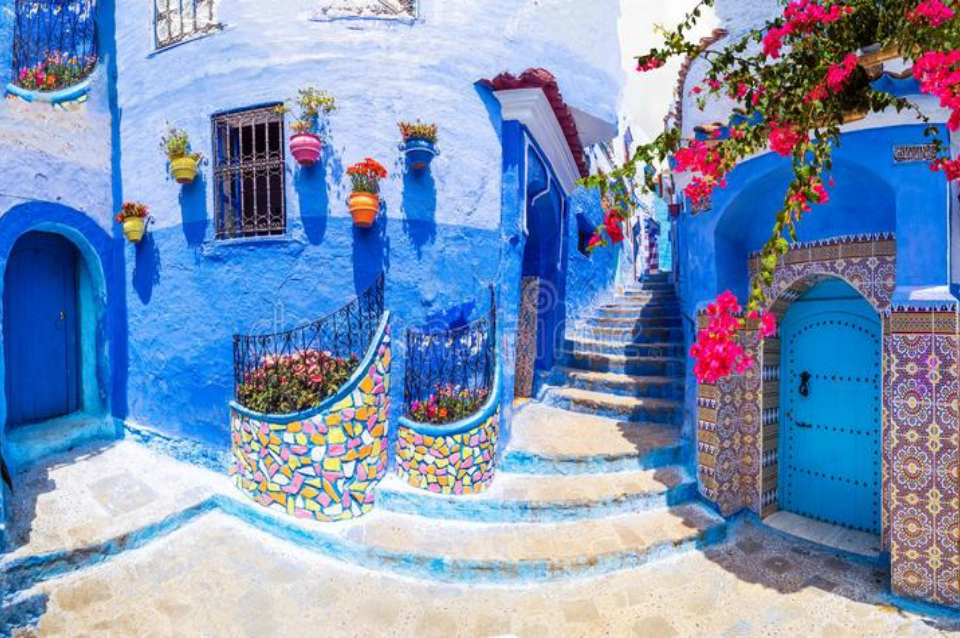
Origins of the Blue City
The exact origins of Chefchaouen’s blue color remain debated. Popular theories include Jewish refugees who arrived in the 1930s painting buildings blue for religious and spiritual reasons (blue representing heaven and divinity in Judaism), practical applications of blue lime wash as insect repellent (particularly mosquitoes), the cooling visual and psychological effects of blue in hot climates, and tourism marketing that encouraged maintaining and expanding the blue aesthetic. Regardless of origin, residents now repaint buildings annually, preserving the distinctive character.
Navigating the Medina Labyrinth
The medina’s organic layout follows hillside topography with steep, narrow streets connecting different elevations. Unlike grid-pattern cities, Chefchaouen rewards wandering without maps—getting lost reveals hidden courtyards, local workshops, and perspectives missed by goal-oriented navigation. Key landmarks include Plaza Uta el-Hammam (central square), the Kasbah, and various gates, but the real treasures lie in unmarked alleys and staircases.
Best Photography Locations
While virtually every corner offers photographic potential, certain locations have become iconic: the stepped street leading from Bab el-Ansar, the area around Rue Bin Souika, the staircases near Place el-Hauta, and various blue doorways throughout the medina. Early morning (7-9 AM) and late afternoon provide best light, with fewer crowds and dramatic shadows enhancing the blue tones.
Respecting Residential Character
Remember that the medina is home to real families, not an open-air museum. Many beautifully photographed doorways and streets are private residences. Respect privacy, avoid photographing people without permission, keep noise levels appropriate, and understand that tourism impacts daily life for permanent residents who deserve consideration.
Historical Heritage and Cultural Sites
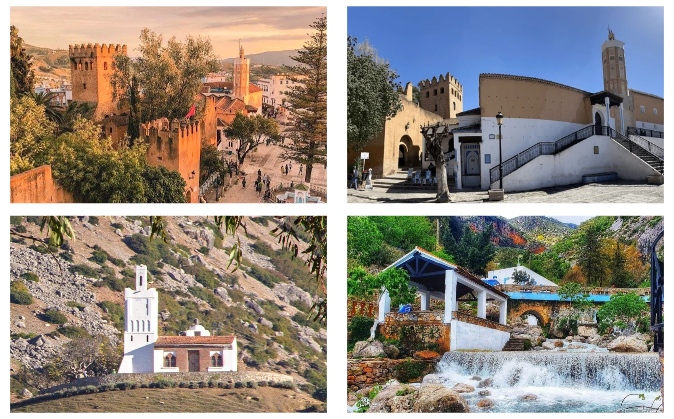
The Kasbah and Ethnographic Museum
Located on Plaza Uta el-Hammam, the restored 15th-century kasbah features beautiful gardens, a small museum showcasing regional artifacts, traditional weapons, musical instruments, and historical photographs. The kasbah tower provides panoramic views over the medina’s blue rooftops toward surrounding mountains. The gardens offer peaceful respite with fountains, flowers, and shaded seating.
Grand Mosque
The octagonal minaret of Chefchaouen’s Grand Mosque represents unique Andalusian architecture rarely seen outside Spain. Non-Muslims cannot enter, but the distinctive minaret visible from many vantage points serves as a navigational landmark and architectural highlight demonstrating the city’s Andalusian heritage.
Spanish Mosque Ruins
Perched on a hillside across from the medina, these abandoned mosque ruins (built during brief Spanish occupation in the 1920s) offer spectacular sunset viewing positions with panoramic city and mountain vistas. The 30-45 minute hike rewards with arguably the best views of Chefchaouen’s blue medina spreading across the valley below.
Ras el-Ma Spring and Waterfall
At the medina’s eastern edge, this natural spring creates small waterfalls cascading down mountainsides. The area provides peaceful atmosphere, local women washing clothes in traditional fashion, and opportunities to observe authentic daily life. The walk along the stream reveals traditional irrigation systems and rural valley scenery.
Mountain Landscapes and Natural Beauty
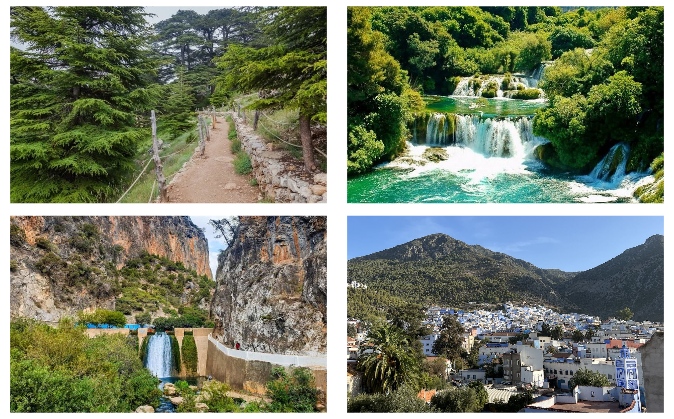
Rif Mountain Setting
Chefchaouen’s dramatic setting in the Rif Mountains provides constant scenic backdrops with limestone peaks, cedar forests, and rugged terrain creating spectacular natural environments. The mountains influence local climate, creating cooler temperatures and occasional winter snow that enhance the city’s appeal.
Talassemtane National Park
Just north of Chefchaouen, this national park protects rare Moroccan fir forests, diverse wildlife, and pristine mountain ecosystems. The park offers numerous hiking trails ranging from easy nature walks to challenging mountain treks, including routes to Jebel el-Kelaa peak and the stunning Akchour waterfalls.
Akchour Waterfalls and God’s Bridge
Approximately 30 kilometers from Chefchaouen, Akchour features spectacular waterfalls and the natural rock formation known as God’s Bridge (Pont de Dieu). The area offers excellent hiking with trails following river gorges to cascading waterfalls and natural swimming pools. Day trips from Chefchaouen make this a popular outdoor adventure destination.
Seasonal Mountain Beauty
Each season transforms the landscape—spring brings wildflower blooms, summer offers lush greenery, autumn creates golden valleys, and winter sometimes dusts peaks with snow. These seasonal changes provide varying experiences and photographic opportunities throughout the year.
Arts, Crafts, and Local Culture
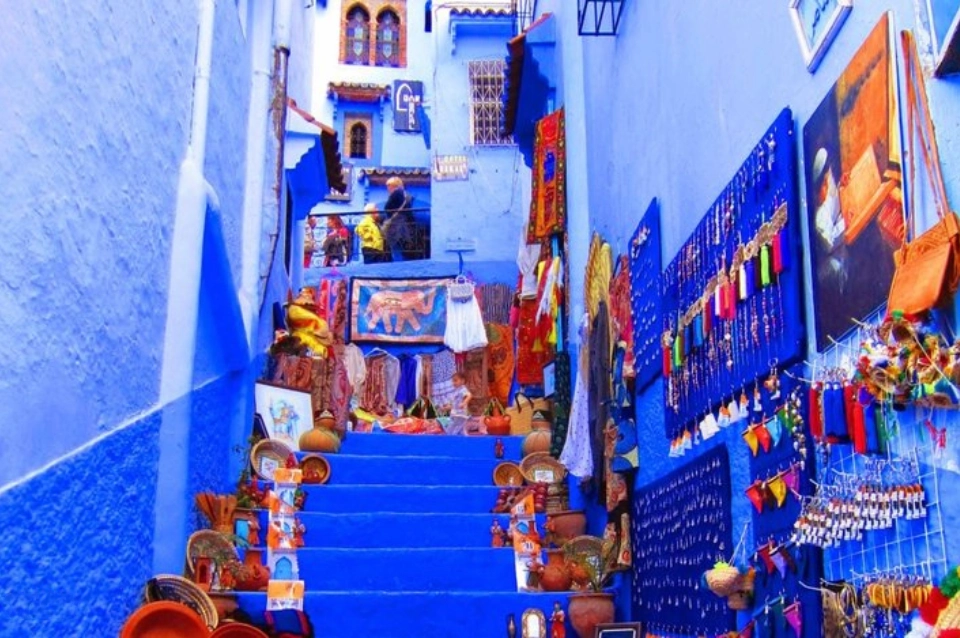
Traditional Berber Textiles
Chefchaouen is renowned for traditional woolen textiles including striped fouta blankets, djellabas, and handwoven rugs. Local cooperatives, particularly women’s weaving cooperatives, maintain traditional production methods. Purchasing directly from cooperatives supports local artisans and provides fair prices for authentic handmade goods.
Local Artisan Workshops
Throughout the medina, small workshops produce leather goods, woodwork, pottery, and traditional crafts. Many artisans welcome visitors to observe production processes, explaining techniques and materials. These encounters provide cultural insights beyond simple commercial transactions.
Art Galleries and Creative Community
The city’s beauty and light attract artists from Morocco and internationally, creating a small but vibrant arts community. Several galleries showcase local and visiting artists’ work, often featuring medina-inspired pieces. The creative atmosphere contributes to the city’s bohemian character.
Cannabis Culture and Legal Considerations
The Rif Mountains are historically Morocco’s primary cannabis cultivation region. While you may observe cultivation and encounter offers, cannabis remains illegal in Morocco. Tourists should decline offers to avoid legal complications, as authorities actively prosecute drug offenses regardless of local cultivation acceptance.
Culinary Scene and Dining Experiences
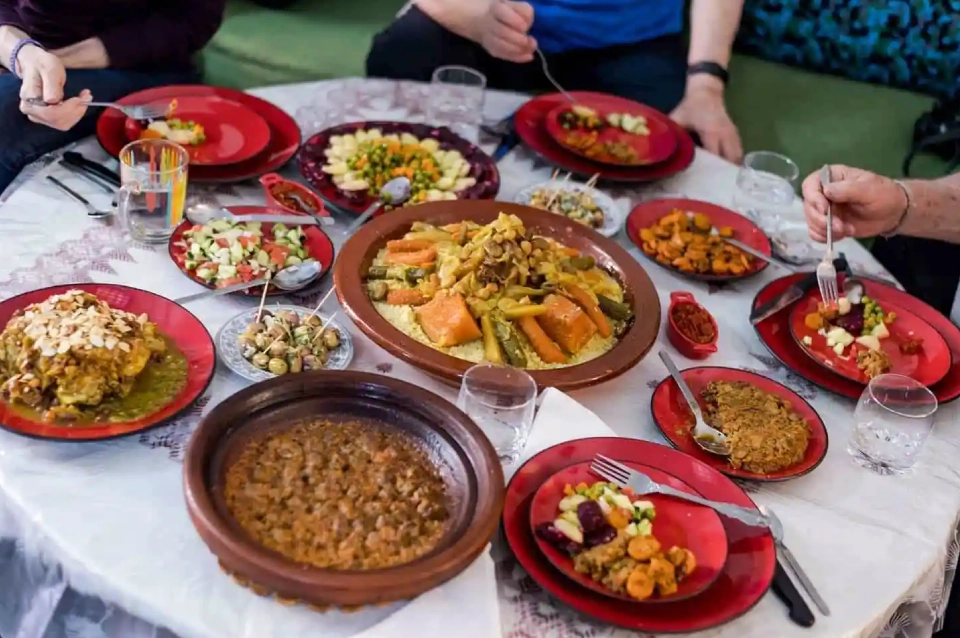
Traditional Moroccan Cuisine
Restaurants throughout Chefchaouen serve excellent tagines, couscous, and traditional dishes, often featuring local ingredients from surrounding valleys. The mountain location ensures fresh vegetables, excellent goat cheese, local honey, and distinctive flavors reflecting regional specialties.
Rooftop Restaurants and Terraces
Many restaurants feature rooftop terraces providing medina views while dining. These atmospheric spaces offer memorable meal settings where excellent food combines with visual beauty and mountain breezes, especially magical during sunset hours.
Vegetarian and International Options
Chefchaouen offers surprisingly diverse dining including vegetarian-friendly restaurants, cafes serving international breakfast options, and fusion establishments blending Moroccan and Western cuisines. This variety reflects the international traveler demographic.
Local Food Markets
The daily market and small neighborhood shops sell fresh produce, regional specialties including local cheeses and honey, traditional breads, and ingredients showcasing agricultural production from surrounding valleys. Market visits provide cultural insights and ingredients for picnics.
Accommodation Paradise
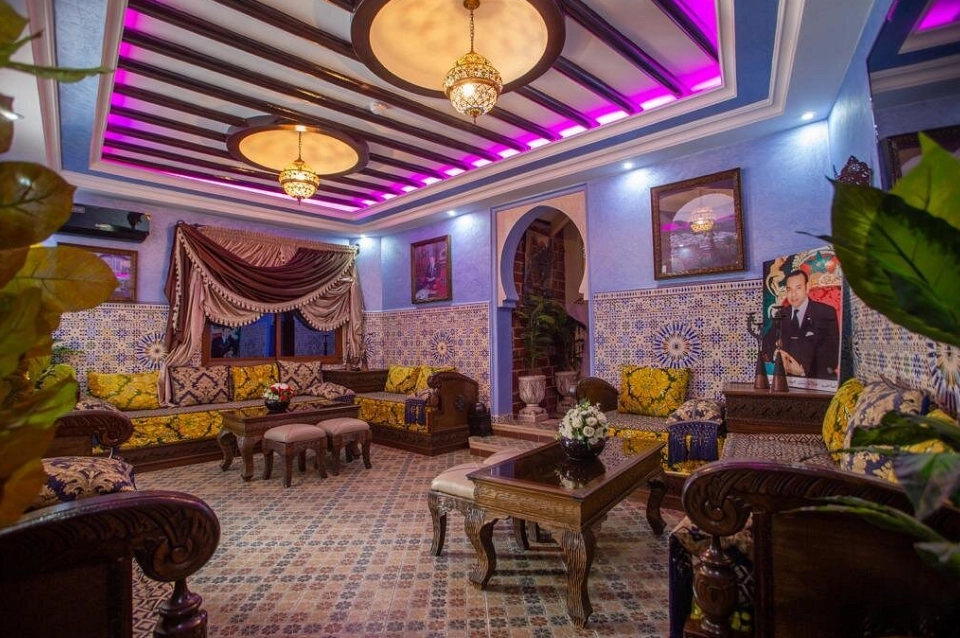
Boutique Riads and Guesthouses
Chefchaouen boasts exceptional accommodation options with numerous restored traditional houses converted to intimate riads and guesthouses. These establishments feature traditional architecture, rooftop terraces with mountain views, personalized service, and authentic Moroccan design often incorporating the famous blue aesthetic.
Budget-Friendly Options
The city offers excellent budget accommodation including hostels, simple guesthouses, and family-run pensions. Many budget options maintain charm and character while keeping prices affordable for backpackers and budget-conscious travelers.
Luxury and Mid-Range Hotels
Several upscale hotels provide modern amenities, swimming pools, spa services, and comprehensive facilities while incorporating traditional design elements. These properties offer comfortable bases combining convenience with authentic atmosphere.
Exceptional Hospitality
Regardless of price point, Chefchaouen’s accommodation providers consistently demonstrate warm Moroccan hospitality. Hosts often provide valuable local knowledge, arrange activities, and treat guests with genuine friendliness that enhances overall experiences.
Activities and Experiences
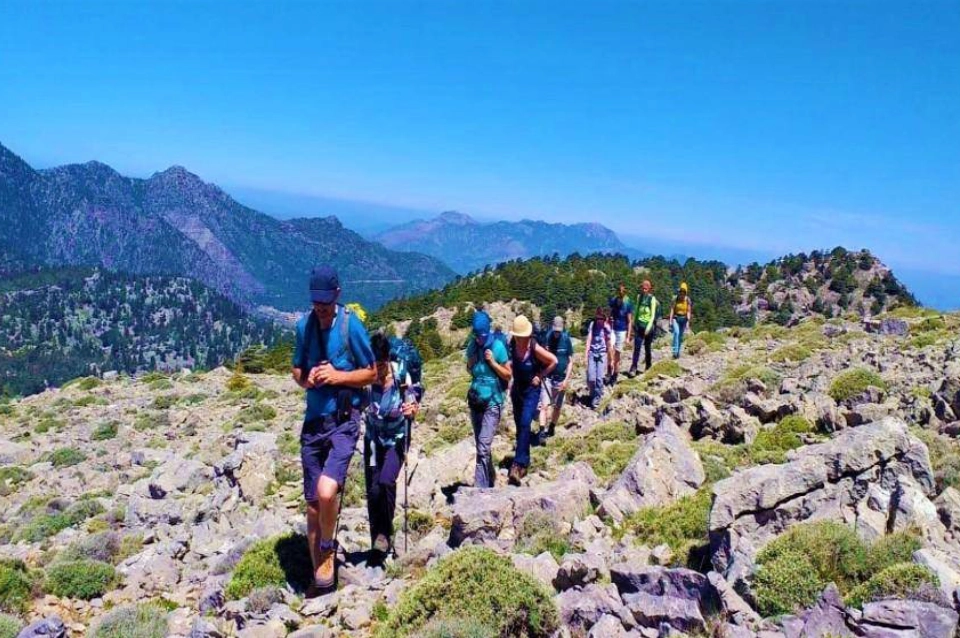
Hiking and Trekking
Numerous trails surrounding Chefchaouen range from easy valley walks to challenging mountain ascents. Popular routes include the Spanish Mosque trail, Jebel el-Kelaa summit hike, and various paths through Talassemtane National Park. Local guides enhance experiences with botanical knowledge, cultural insights, and navigation assistance.
Cooking Classes
Several establishments offer cooking classes where participants learn traditional Moroccan dish preparation, visit markets for ingredient shopping, and enjoy meals they’ve created. These hands-on experiences provide lasting culinary knowledge and cultural understanding.
Photography Workshops and Tours
Given the city’s photographic appeal, specialized photography workshops and tours help participants capture the medina’s beauty while learning composition techniques, understanding optimal lighting, and accessing lesser-known locations.
Hammam and Wellness
Local hammams offer traditional Moroccan bathing experiences at reasonable prices. These authentic bathhouses provide relaxation, cultural immersion, and opportunities to understand traditional hygiene and wellness customs.
Practical Travel Information
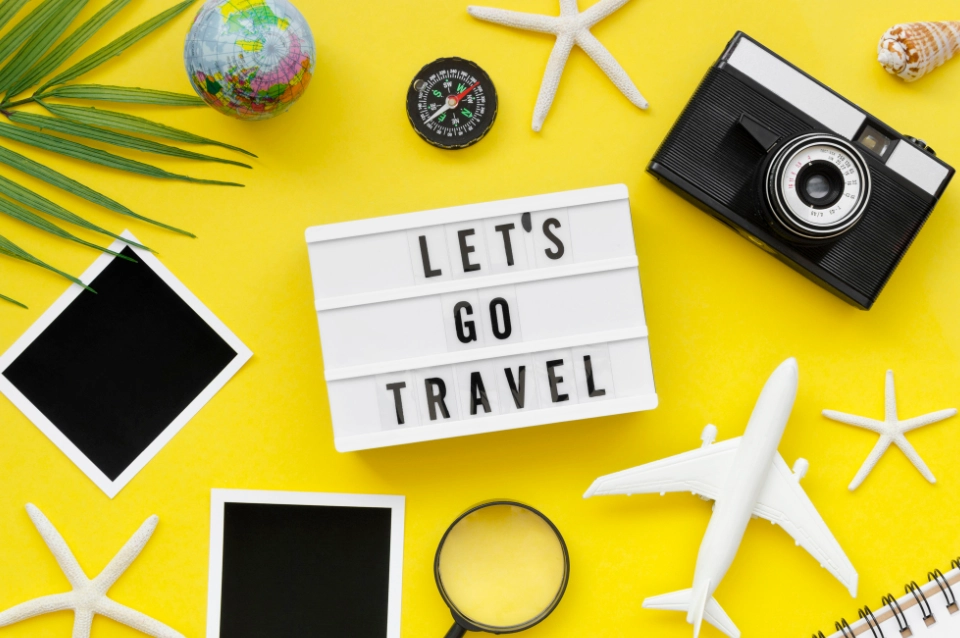
Getting to Chefchaouen
No direct train service exists; visitors typically take buses or shared grand taxis from Fes (4 hours), Tangier (3 hours), or other northern cities. The mountain roads are scenic but winding. Private transfers and car rentals offer flexibility for independent travelers.
Best Time to Visit
Spring (March-May) brings perfect weather and blooming landscapes. Autumn (September-November) offers comfortable temperatures and fewer summer crowds. Summer can be warm but remains cooler than lowland cities. Winter brings cold temperatures and occasional rain but also peaceful atmosphere and snow-dusted mountain views.
How Long to Stay
Most travelers allocate 2-3 days—sufficient for thorough medina exploration, day hikes, and absorbing the atmosphere. Photographers and hiking enthusiasts often extend stays to 4-5 days for comprehensive exploration. The relaxed pace and enchanting atmosphere often inspire longer stays than initially planned.
Money and Costs
Chefchaouen offers good value with reasonable accommodation and dining prices. ATMs are available but can run out of cash during peak periods—carry sufficient funds. Many small shops and restaurants prefer cash transactions.
Tips and Recommendations
Photography Etiquette
- Early morning offers best light and fewer tourists
- Always ask permission before photographing people
- Respect that homes are private, not just photo backdrops
- Consider small tips for locals who pose for portraits
- Explore beyond main tourist streets for unique compositions
Navigating the Medina
- Embrace getting lost as part of the experience
- Download offline maps for basic orientation
- Landmarks help navigation: kasbah, main square, city gates
- Locals are helpful with directions
- Most hotels provide simple hand-drawn maps
Cultural Sensitivity
- Dress modestly, especially women (cover shoulders and knees)
- Respect prayer times and religious observances
- Ask permission before entering shops to photograph
- Be patient and friendly with local merchants
- Learn basic Arabic or French greetings
What to Pack
- Comfortable walking shoes for steep, uneven streets
- Layers for temperature variations (mountains can be cool)
- Sun protection and hat
- Camera with extra batteries and storage
- Modest clothing appropriate for conservative areas
- Daypack for hiking excursions
Hidden Gems and Local Secrets
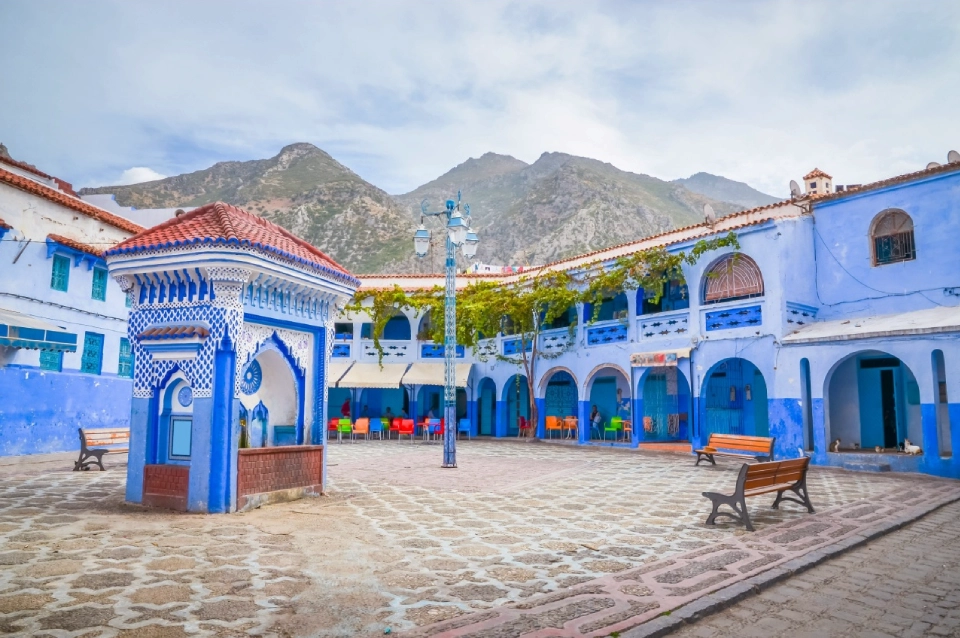
Early Morning Exploration
The medina transforms before 8 AM when most tourists sleep. Local life unfolds authentically with fresh bread deliveries, market preparations, and peaceful blue streets bathed in soft morning light.
Lesser-Known Viewpoints
Beyond the Spanish Mosque, several elevated locations offer spectacular views with fewer visitors. Local guides or accommodation hosts can direct you to these secret vantage points.
Neighborhood Workshops
Venturing into residential quarters reveals small workshops where craftspeople practice traditional skills. These encounters, approached respectfully, provide authentic insights beyond tourist-oriented shops.
Local Cafes and Gathering Spaces
Neighborhood cafes away from tourist areas offer authentic social experiences where locals gather. These establishments welcome respectful visitors and provide glimpses into genuine community life.
Seasonal Festivals
Timing visits to coincide with local festivals or celebrations provides unique cultural experiences. Ask locals or accommodation hosts about upcoming community events during your stay.
FAQs
Q1: Why is Chefchaouen painted blue, and do residents maintain this tradition? A: While theories vary (Jewish mystical traditions, insect repellent properties, cooling effects), the exact origin remains unclear. What’s certain is that residents actively maintain the blue aesthetic, repainting buildings annually—often in spring. This maintenance now serves multiple purposes: preserving cultural identity, attracting tourism that supports the local economy, and maintaining the city’s unique character that residents take pride in. The specific shades vary by household preference, creating the beautiful variety of blues throughout the medina.
Q2: Is Chefchaouen too touristy and Instagram-focused to be authentic? A: While tourism has increased significantly due to Instagram fame, Chefchaouen maintains authentic character beyond the most photographed streets. The medina remains a functioning residential neighborhood where families live, children play, and daily life continues. Venturing beyond the main tourist corridors (Rue Bin Souika, etc.) reveals quieter residential areas where authentic life persists. Visiting during early morning or late afternoon, staying multiple days, and engaging respectfully with locals provides experiences transcending superficial tourism.
Q3: What’s the ideal length of stay in Chefchaouen? A: Most travelers allocate 2-3 days, which allows thorough medina exploration, a day hike to surrounding areas (Spanish Mosque, Akchour waterfalls), and time to absorb the relaxed atmosphere. Photographers might want 3-4 days to capture different lighting conditions and seasons. The city’s compact size and laid-back vibe often inspire longer stays than planned—many visitors extend their time after falling under the blue city’s spell. Base your decision on whether you prioritize thorough exploration and hiking versus fitting Chefchaouen into broader Morocco itineraries.
Q4: Is Chefchaouen safe, and are there any specific concerns for travelers? A: Chefchaouen is very safe with low crime rates and genuinely friendly residents. The main concerns are: declining cannabis offers (possession is illegal despite local cultivation), respecting that the medina is residential (avoid disturbing residents), navigating steep streets carefully (cobblestones can be slippery), and being aware that some less-scrupulous guides may overcharge or pressure travelers. Standard travel precautions are sufficient, and the city’s small size and relaxed atmosphere create a particularly welcoming environment for solo travelers and women.
Q5: Can I visit Chefchaouen as a day trip from Fes or Tangier? A: While technically possible, day trips are not recommended. The journey from Fes takes 4+ hours each way, Tangier 3+ hours, leaving minimal time to experience the city. Chefchaouen rewards slower exploration—wandering the medina, hiking to viewpoints, absorbing the atmosphere, and experiencing evening ambiance when day-trippers depart. The journey through winding mountain roads is tiring, making rushed day trips exhausting and unsatisfying. Plan at least one overnight stay (preferably 2-3 nights) to properly experience the blue city’s magic without the stress of long travel on the same day.

